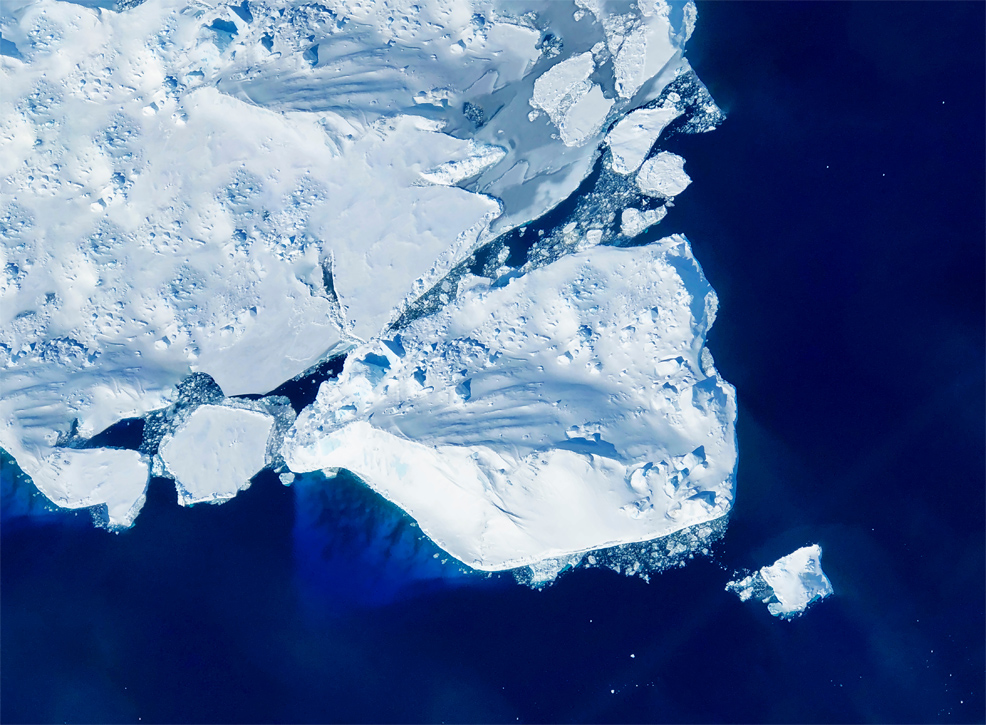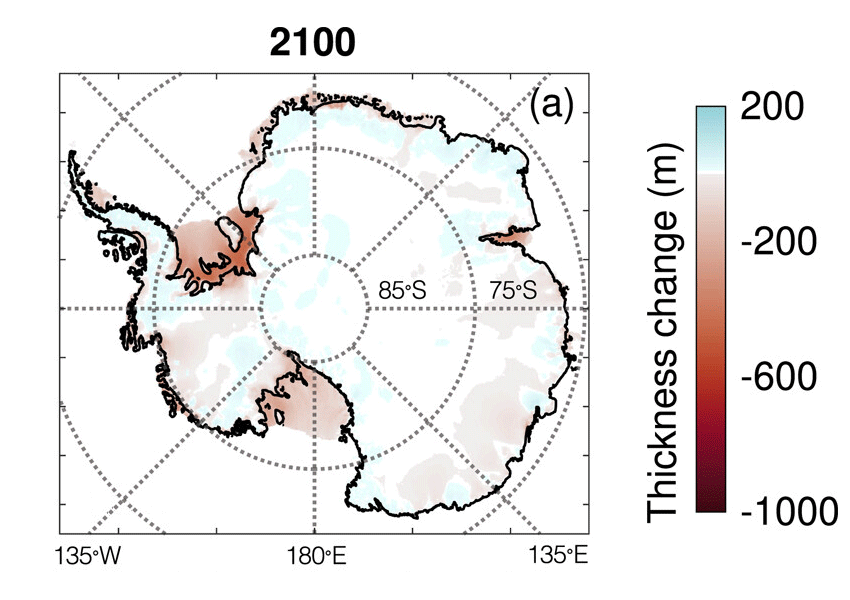
3rd October 2024 Climate study forecasts Antarctic ice trends to 2300 Scientists have published the first ever multi-century, multi-model forecast of Antarctic ice sheet loss derived from global climate simulations, indicating that the West Antarctic ice sheet has potential to undergo a near-total collapse by 2300.
Most climate change projections tend to focus on the relatively near future – looking ahead to 2050, or maybe the end of the century. But a new study examines the Antarctic ice sheet over a much longer timeline, forecasting its likely behaviour until the year 2300. This longer-term perspective reveals a stark contrast between low and high carbon emission scenarios, underscoring how decisions made today could affect the world, not just within a generation or two, but over several human lifetimes. The study, led by New Hampshire's Dartmouth College, appears in the journal Earth's Future and involved the collaboration of more than 50 climate scientists around the world. It provides the clearest evidence yet that under current emissions, a large portion of Antarctica's ice will melt rapidly and trigger multi-metre sea level rise during the 22nd and 23rd centuries. The researchers combined data from 16 ice-sheet models, creating the most comprehensive analysis to date of how Antarctica's glaciers might respond to different levels of carbon emissions. They found that the region's ice loss will continue through the 21st century – but at a relatively gradual pace – even if current global emissions remain high. However, this situation changes dramatically during the 22nd century. Both the Ross and Ronne ice shelves, which are holding back some of the largest glaciers on the continent, face substantial retreat. Rather like the uncorking of a giant bottle, this would release much faster ice flow into the ocean.
So, while the contribution to global sea-level rise is expected to be a somewhat modest 0.3 metres (1 ft) by 2100, this rises to 1.7 metres (5.5 ft) by 2200 and potentially as much as 4.4 metres (14.4 ft) by 2300. Under such a scenario, the inundation of coastal cities would likely require hundreds of millions of people around the world to be permanently resettled. Vast areas of West Antarctica might no longer exist in their current form, with air temperatures about 20°C (36°F) higher than today and the melting of glaciers continuing into the 24th century and beyond. Hélène Seroussi, the study's first author, is an associate professor at Dartmouth who specialises in glaciology. "When you talk to policymakers and stakeholders about sea-level rise, they mostly focus on what will happen up to 2100. There are very few studies beyond that," she explains in a news release from the college. "Our study provides the longer-term projections that have been lacking. The results show that beyond 2100, the long-term impact for the regions most susceptible to sea-level rise become amplified." "All the models agree that once these large changes are initiated, nothing can stop them or slow them down. Several basins in West Antarctica could experience a complete collapse before 2200," she adds. "The exact timing of such collapses remains unknown and depends on future greenhouse gas emissions, so we need to respond quickly enough to reduce emissions before the major basins are lost." While the high-emissions scenario presents a grim future – reminiscent of Naomi Oreskes' book, The Collapse of Western Civilization – this outcome should be viewed as a worst-case projection. Fortunately, there are signs that global emissions may be peaking in the near future, thanks to progress in clean technology such as renewables and electric vehicles, likely putting the world on a more sustainable path well before 2100. Indeed, the study also explored a low-emissions scenario, one where global efforts to cut carbon lead to much slower rates of ice loss. Under this scenario, Antarctica's ice sheet collapse could be largely avoided, limiting its contribution to sea-level rise to around 0.5 metres by 2300. This more optimistic forecast suggests that immediate and sustained emission reductions could prevent the truly catastrophic outcomes and preserve much of the continent's ice. "While current carbon emissions have only a modest impact on model projections for this century, the difference between how high- and low-emission scenarios contribute to sea-level rise grows sharply after 2100," says Mathieu Morlighem, Professor of Earth Sciences and a co-author on the study. "These results confirm that it is critical to cut carbon emissions now to protect future generations."
Comments »
If you enjoyed this article, please consider sharing it:
|
||||||








